
Lumen were invited by the Whitworth Art Gallery, Manchester, to install Turner Prize winning artist Elizabeth Price’s new exhibition, A LONG MEMORY. An exhibition which includes multiple, large audio/video works across two large galleries with a large central gallery between them featuring other works by the artist.
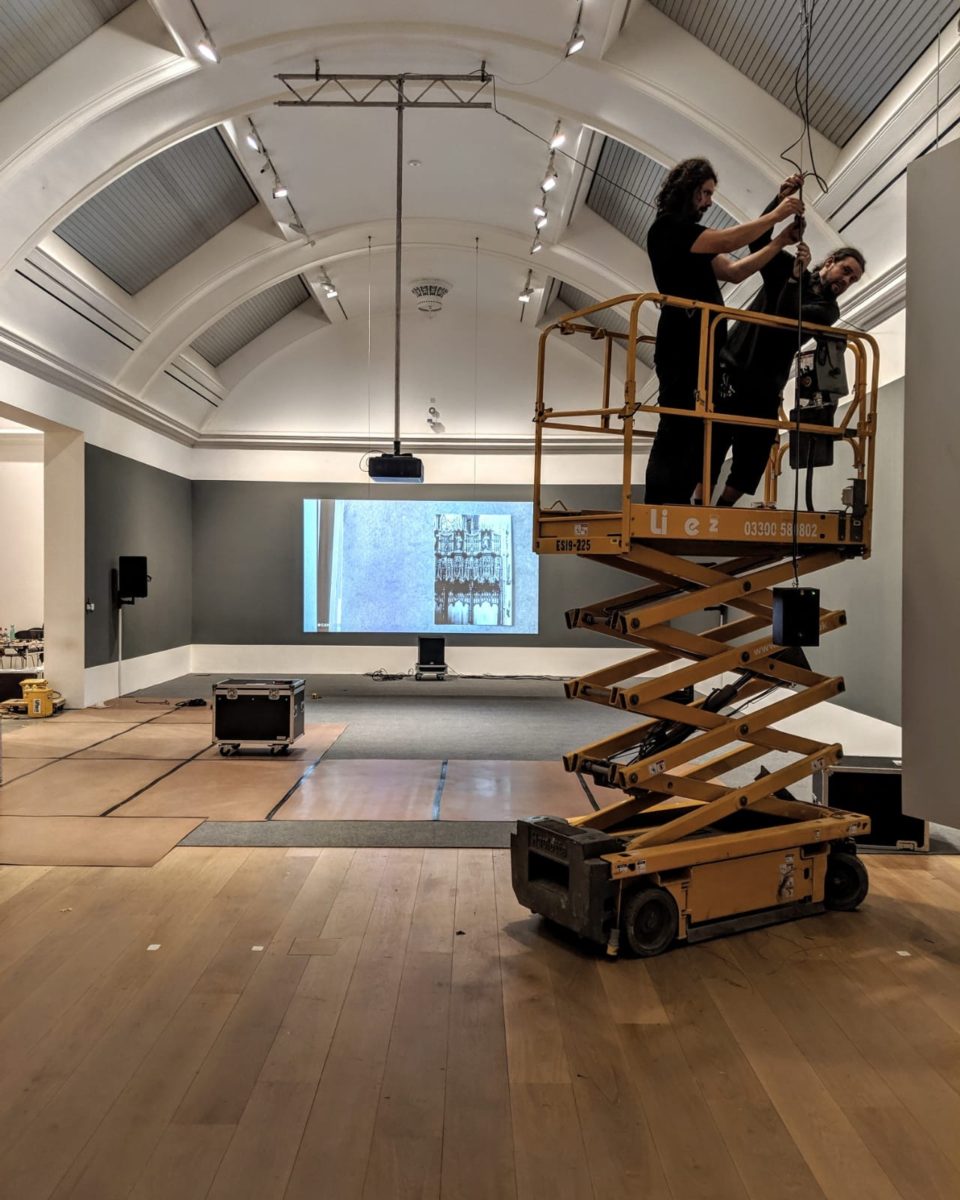
One of the galleries features three separate, synchronised video works (The Woolworths Choir of 1979, K and At the House of Mr X) running from two synchronised Blackmagic Hyperdeck Studio Pro decks, remote controlled by a tablet for easy control of playback. Each video work has its own sound, so multichannel audio is extracted from the video feeds of the Blackmagic decks and into a Allen & Heath Qu-16 digital desk for DSP and signal distribution to the three pairs of speakers. The sound is an important factor of the works, so the two larger pieces each feature a pair of Yamaha DBR12’s. They are a much larger speaker than typically used in art installations, so coupled with a subwoofer, the sound is very immersive, playing an equally important part of the artwork as the video.
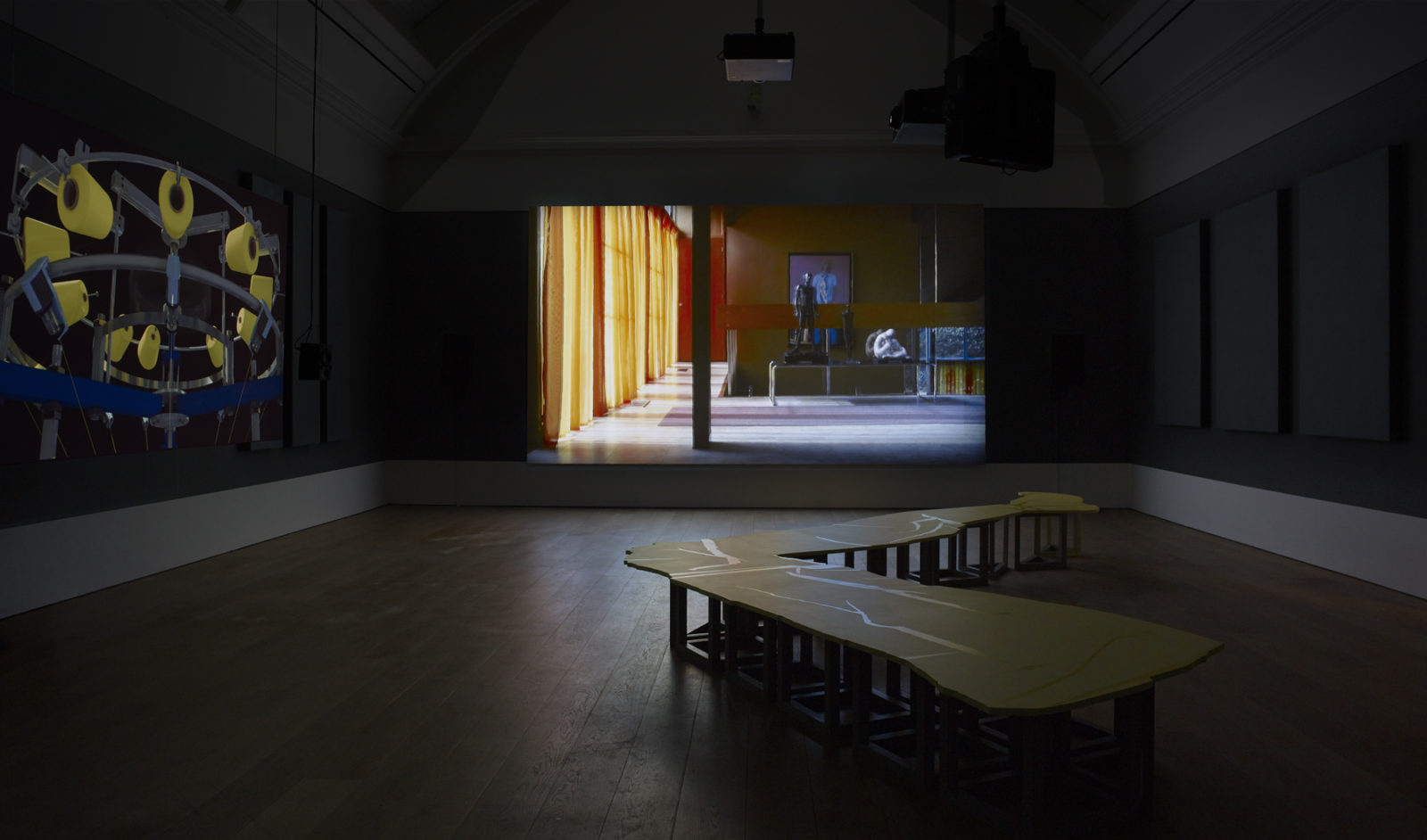
For the video projection, four professional Pansonic DLP laser projectors were used giving excellent results as always, even though their power output was scaled down somewhat for the very dark gallery. They were flown from a large truss system, designed for the show.
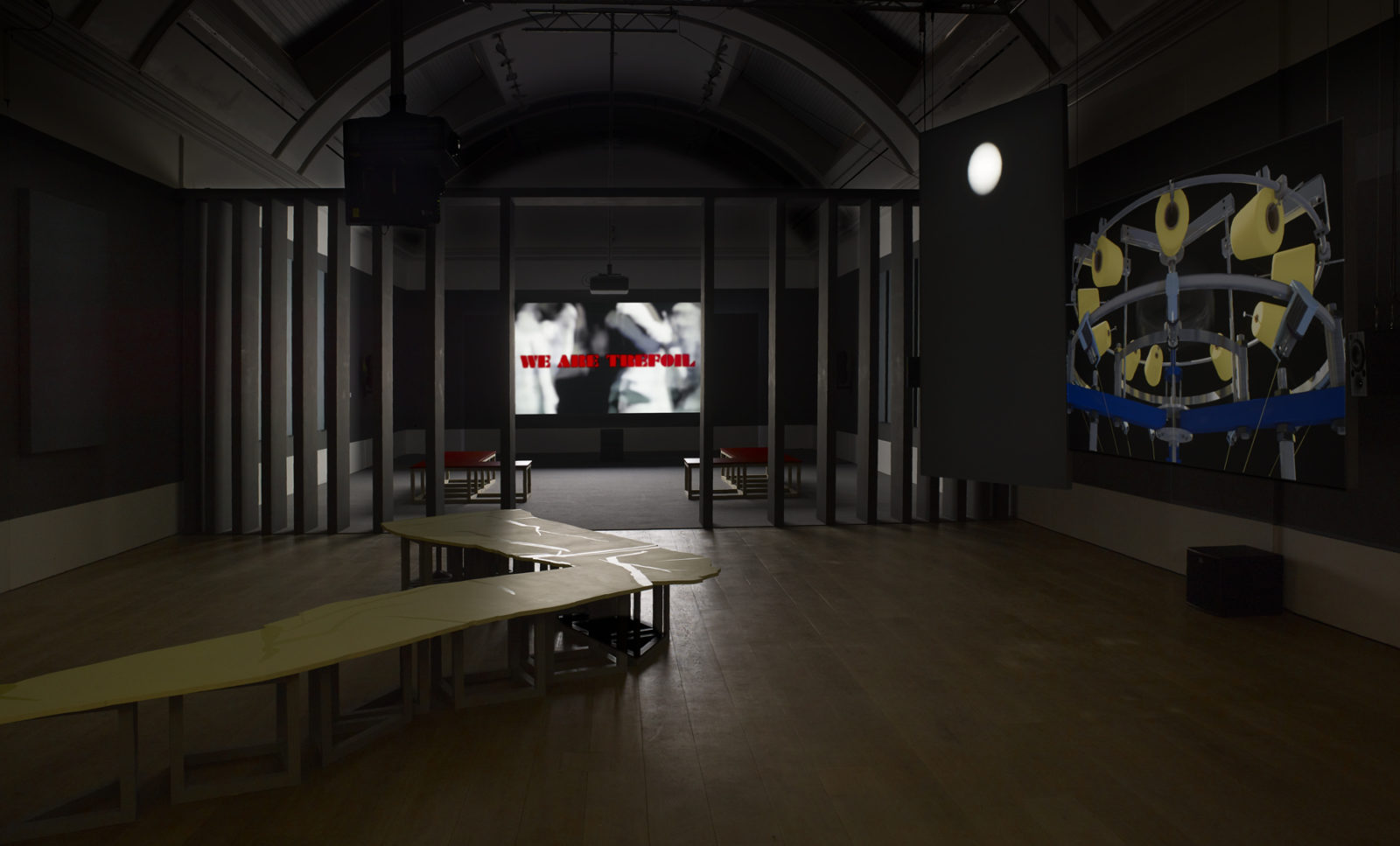
There was also a final video feed running through the entire gallery, through a wall, to a small wall mounted, digital signage screen. This screen displays a ‘countdown timer’ of when each video will start playing.
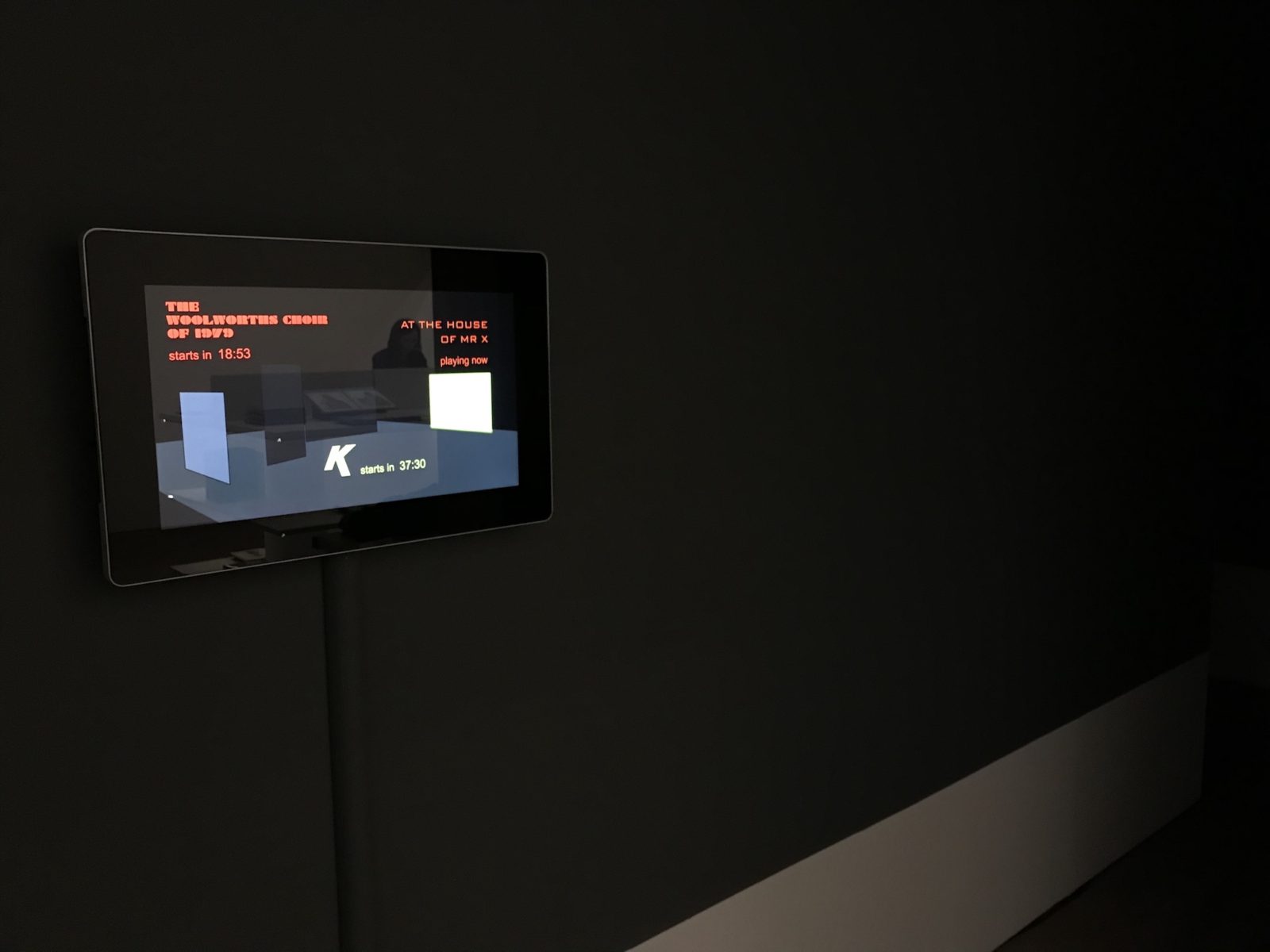
The opposite gallery also features three separate, synchronised video works (The Teachers, Felt Tip and KOHL), but is very different from the works in the other gallery. Two works each feature four separate suspended screens, making up one complete image each and one work features two screens on top of each other to create one complete image.
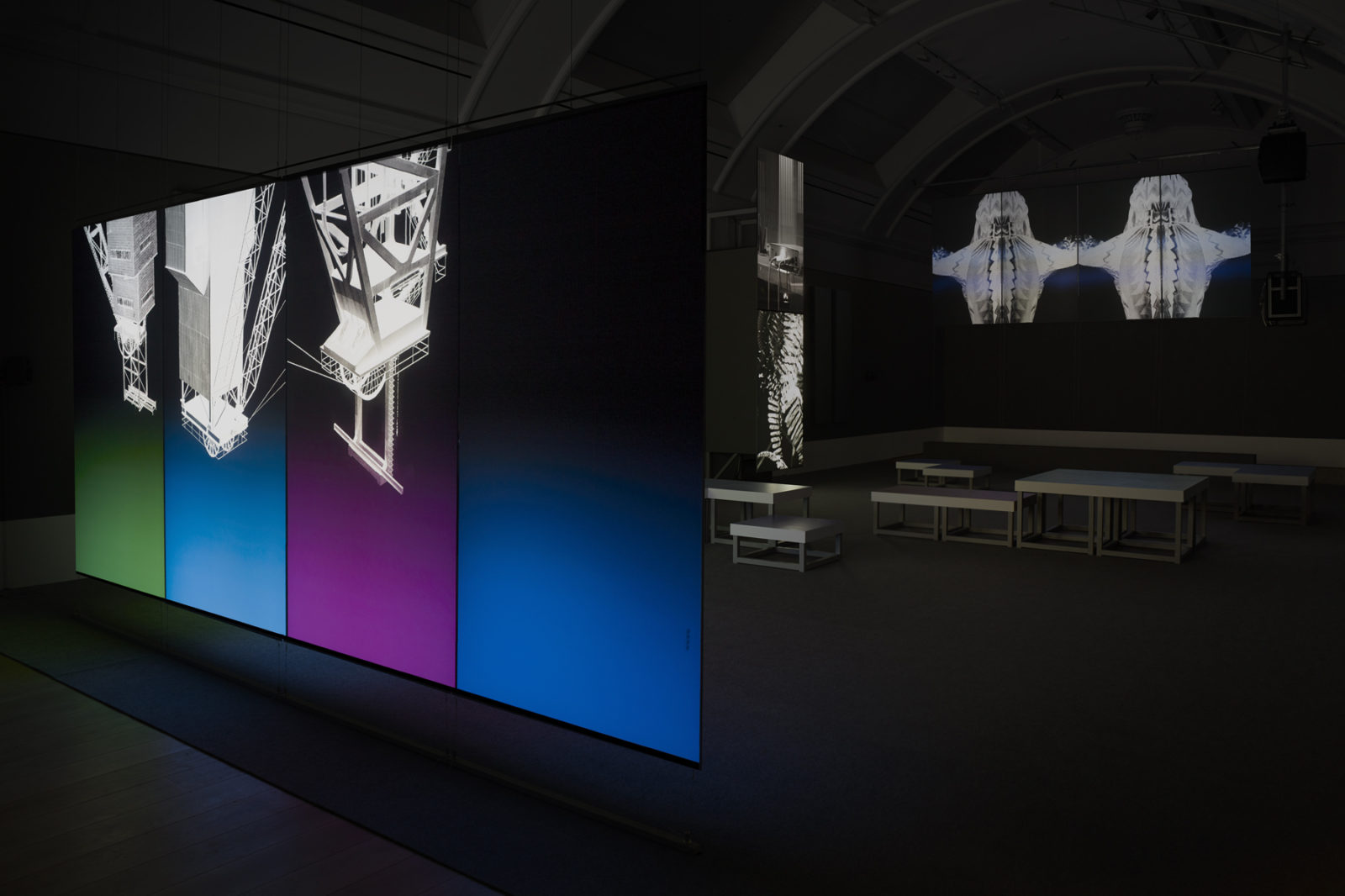
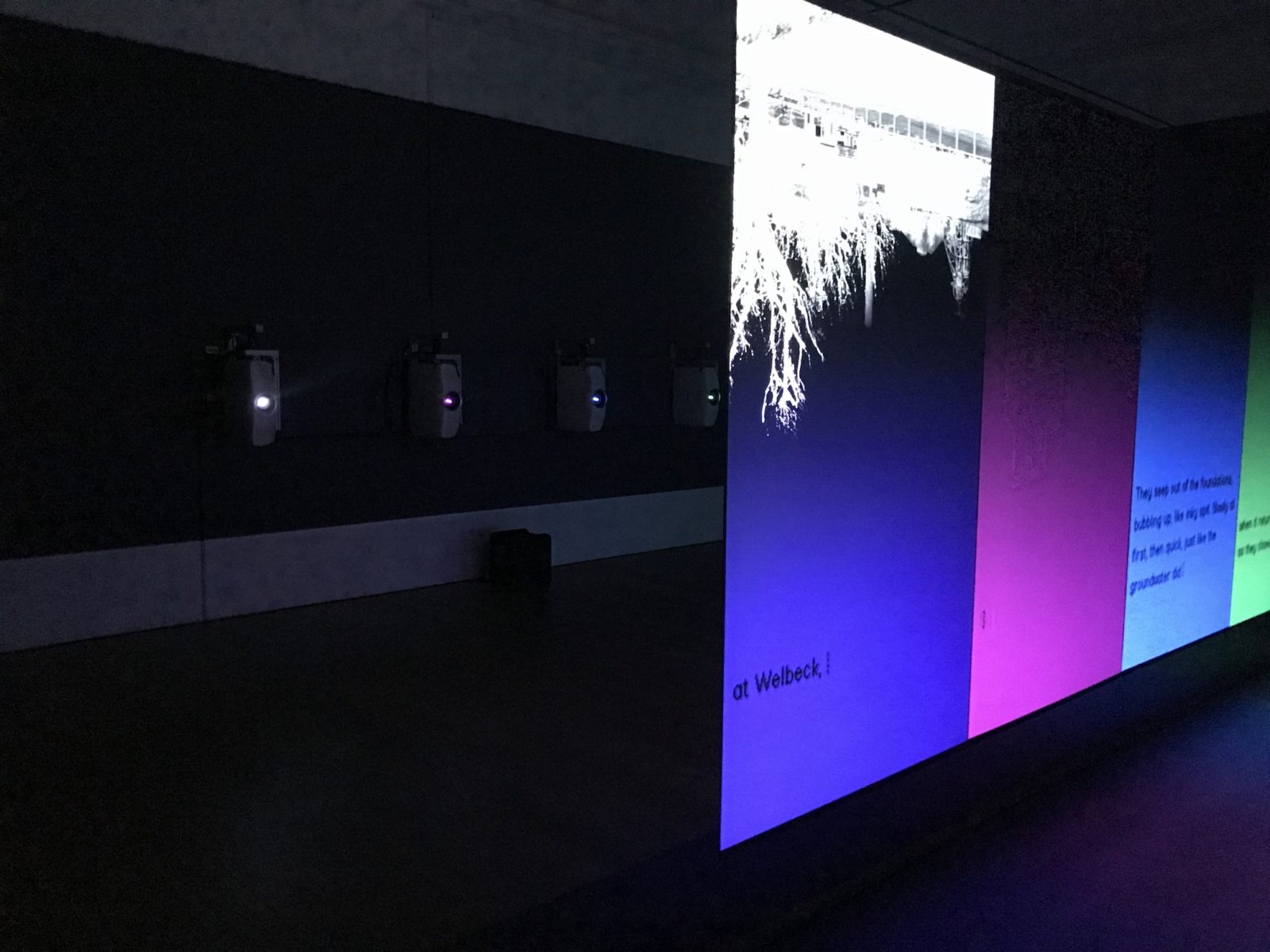
Each set of four projectors (a combination of Epson’s and Vivitek’s) were mounted in portrait, on a custom made Unistrut system that was attached to the wall. One of which was high in the air. The custom made rear projection screens were suspended and weighted into position with magnets.
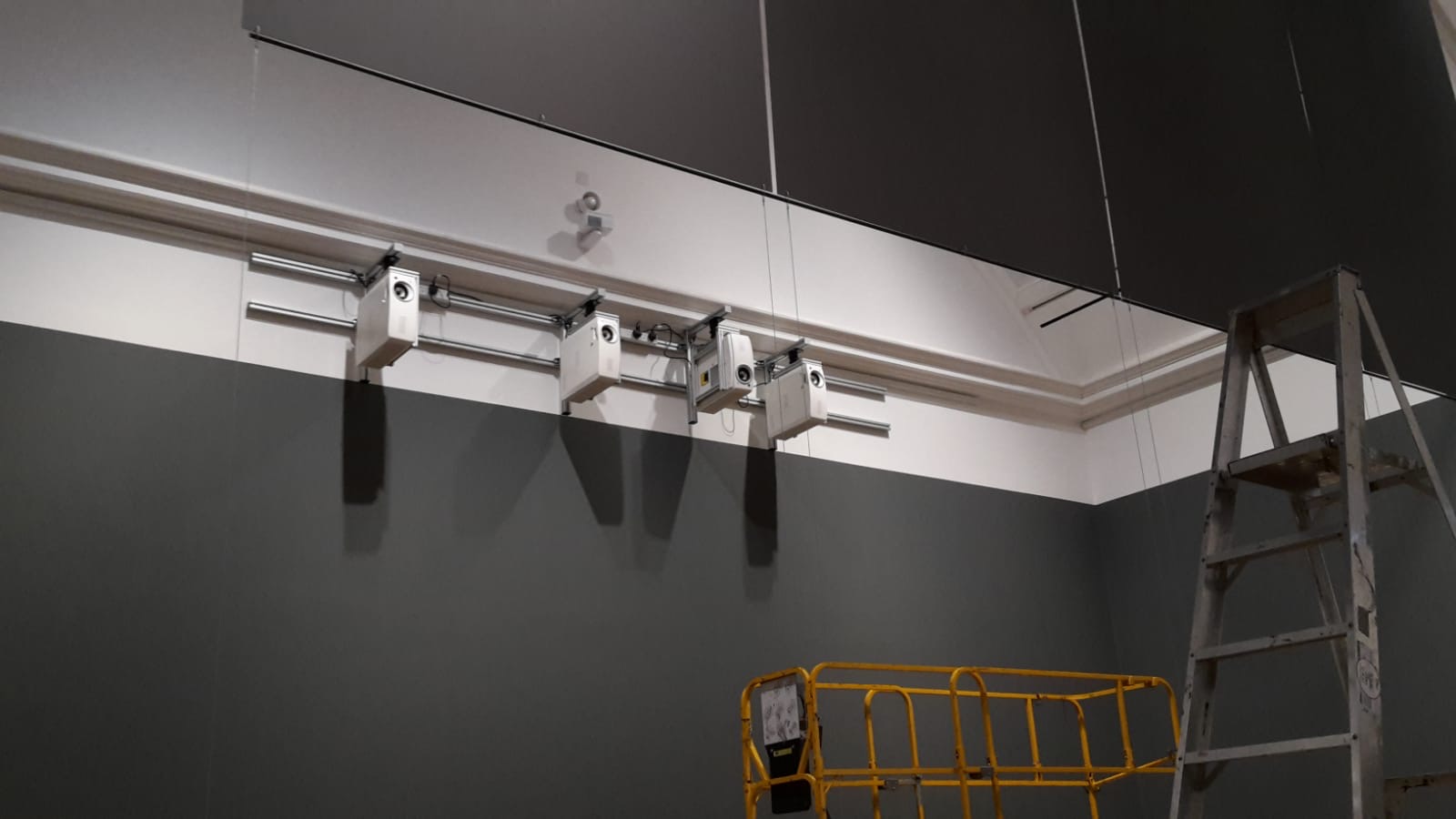
The third piece of work, ‘Felt Tip’, features two screens on top of each other with front projection from truss mounted Epson projectors.
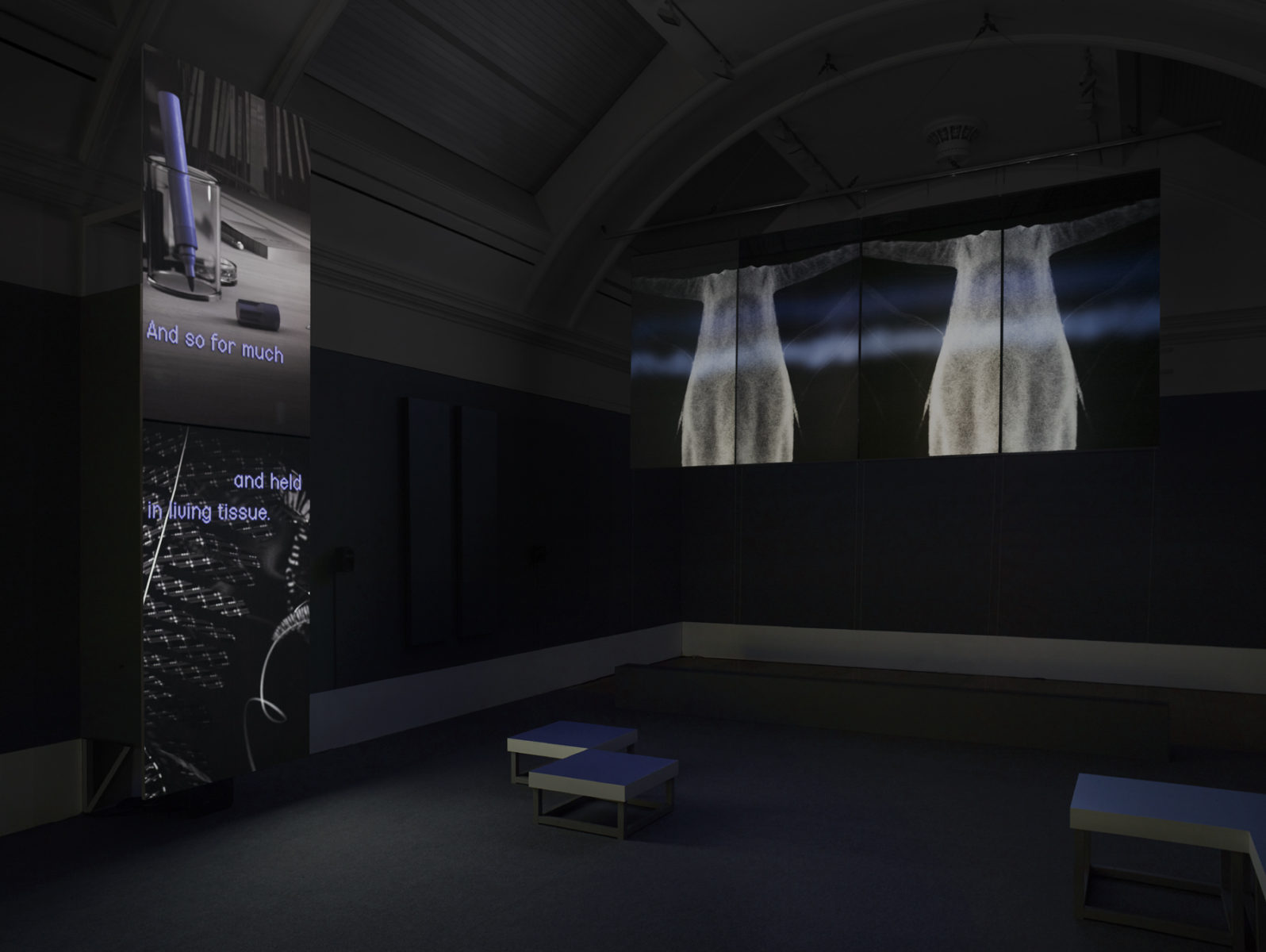
Due to the nature of the screen orientation in the three artworks, it was very tricky work to line up each projected video on each screen to a high standard, whilst at the same time not overshooting. As even a fraction of spill would show up on the other side of the dark gallery space and even on an opposite facing artwork.
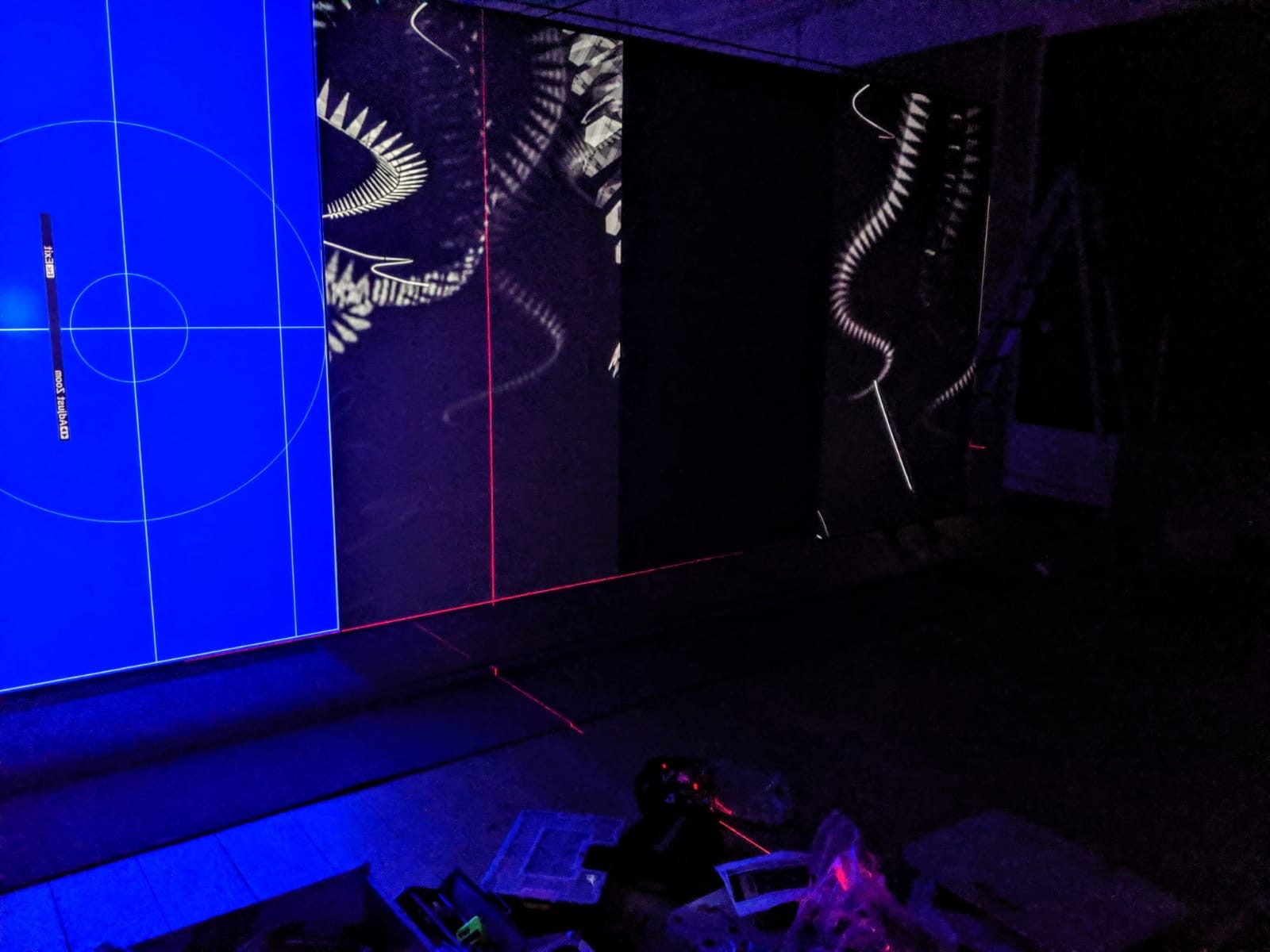
The installation in this gallery was powered by thirteen, synchronised Brightsign media players, again with three separate audio feeds into a Allen & Heath Qu-16 digital desk for DSP and signal distribution to the three pairs of Genelec speakers and subs. Again one video feed was sent through the walls to a ‘countdown timer’ screen in the central gallery space.

The sheer amount of cabling in this entire installation and concealing it very neatly was staggering. A rough guess would be around 500 metres in total. All the cabling was hidden either in trunking that was mounted under the Whitworth’s old cornice, on a truss or under the gallery shadow gap. It was no mean feat fitting 30 metre lengths of XLR cable under the small shadow gap, for then a carpet fitter to cut through one…as this writer knows…
The exhibition has already been gathering excellent reviews in the press and really is a sensory experience, complimented with the further artworks and books that give historical context within the central gallery.
It was a pleasure to work with Elizabeth Price and Rose Goddard to achieve the best result for them and we thank curator Mary Griffiths and Whitworth A/V Technician Tristan Clutterbuck for having us work on this exciting exhibition with them.
Installation by Tristan Clutterbuck, Kathryn Gray, Michael Bryant, Mark Rhodes, Stuart Bannister, Ben Gwilliam, Joe Osborne and James Islip.